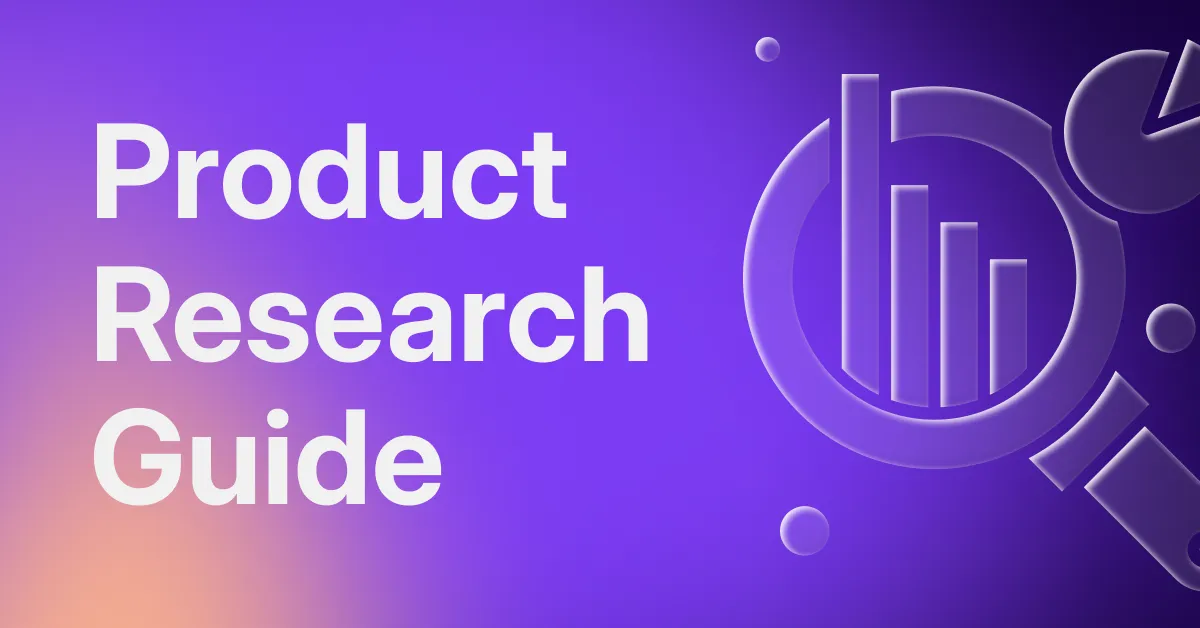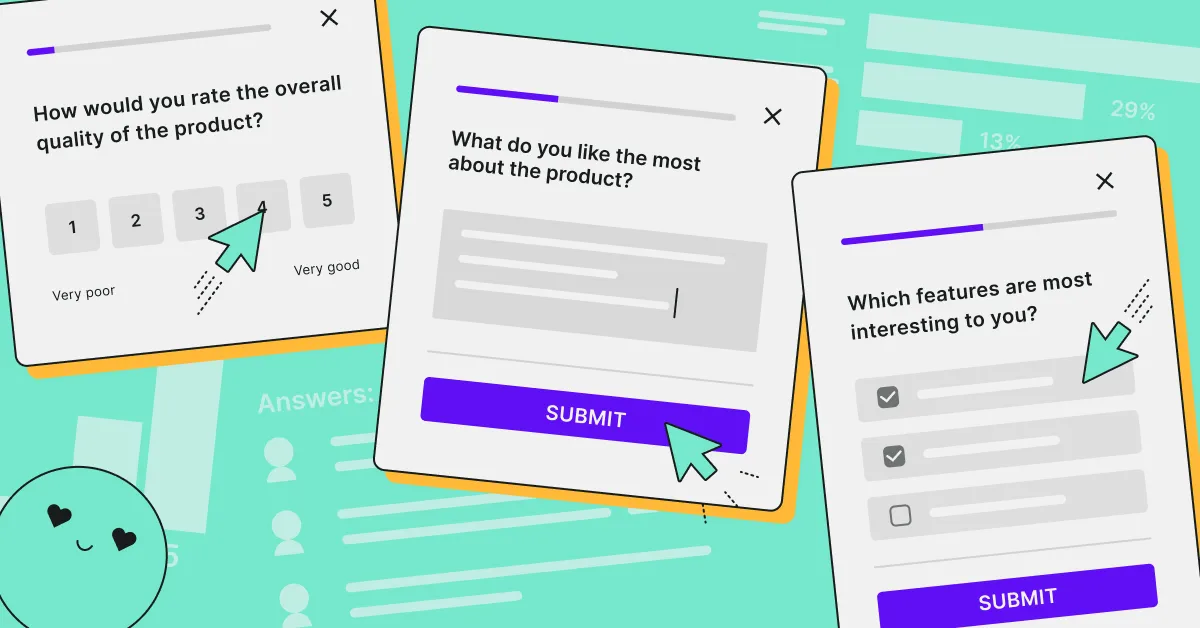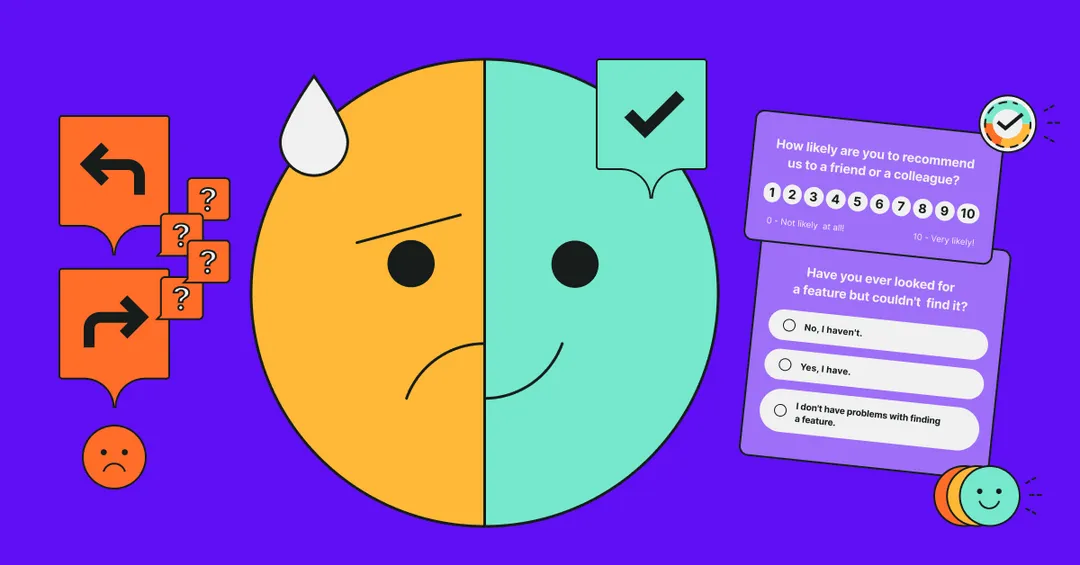While design thinking provides a systematic approach to problem-solving with the user at the center, UX research supplements this process with practical, data-driven insights about the user.
Yet, the integration of UX research methods into design thinking isn't always straightforward, and it's an art that requires understanding and practice.
In this blog post, we'll explore the five stages of design thinking and identify the UX research methods that align with each stage, providing you with a comprehensive guide on how to harness the power of UX research within a design thinking framework.
If you’d like to jump right into collecting user feedback, check out this wildly popular Net Promoter Score survey template:
Understanding design thinking and UX research
Before delving into the application of UX research methods in design thinking, let’s explain what these concepts entail.
Design thinking is a problem-solving approach that encourages designers to think from the users' perspective. It involves understanding users' problems, brainstorming solutions, prototyping, and testing these solutions to iteratively improve the design.
It consists of five iterative stages:
- Empathize
- Define
- Ideate
- Prototype
- Test
User experience (UX) research, on the other hand, is a process of understanding users’ behaviors, motivations, and needs through observation techniques, task analysis, and other feedback methodologies.
Some of the methods used in UX research include:
- user interviews
- focus groups
- UX surveys
- card sorting
- A/B testing
- data analysis
- heatmaps
UX research is a key part of design thinking as it uncovers how users interact with a product and what they expect from it, providing designers with actionable insights to enhance the overall user experience.
Now, how do you combine these two strategies? Let's explore this by looking at each stage of the design thinking process.

Stage 1: Empathize
The first stage of design thinking involves empathizing with the users and trying to understand their needs, behaviors, and pain points. This is where UX research methods play a pivotal role.
Conducting user interviews is a great way to gather qualitative data about your users. The open-ended format of interviews allows you to delve deep into your user's thoughts, feelings, and attitudes towards a product.
Observation studies, which involve observing users interact with your product in their natural environment, can also provide provides firsthand information about their needs and behavior.
Surveys are particularly useful for gathering quantitative data from a large number of users. Here’s an example of a UX audit survey that can help you discover problematic areas of your mobile app:
Stage 2: Define
After gaining insights about users, design thinking moves to the 'Define' stage, where the user information you collected is compiled to define the problem or opportunity. UX research can further refine your understanding of the problem with user personas and journey mapping.
User personas are fictional, generalized representations of your user base created with the data you collected in the Empathize stage. They help in understanding the users' needs, experiences, behaviors, and goals in a structured manner.
Journey mapping involves creating a visual narrative of the users' interactions with the product to identify potential pain points, emotions, and moments of truth in the user journey and reveal opportunities for enhancing the user experience.
Stage 3: Ideate
The Ideation stage involves brainstorming and coming up with creative solutions for the defined problem.
UX research supports this process through competitive analysis, which consists of studying competing products to generate ideas for potential features and improvements. This can help in identifying gaps in the market that your product can potentially fill, offering a competitive advantage.
It’s also a good idea to use co-creation sessions, which involve users in the ideation process through co-creation workshops to generate unique, user-centric ideas, at this stage.
Stage 4: Prototype
The Prototyping stage involves developing a scaled-down version of your product to visualize the solution. At this stage, you might benefit from usability testing to observe how your users interact with your prototype.
Surveys such as the one below can complement usability testing insights with a wealth of quantitative data:
Stage 5: Test
The final stage of design thinking is Testing. Here, the prototype is refined based on user feedback. It’s time to analyze the insights you collected and make further improvements.
At this stage, you can use A/B testing to compare two or more versions of a feature to determine which one performs better, as well as other UX methods such as surveys and usability testing.

Automate your UX surveys with Survicate
Among the various UX research methods, surveys are one of the most potent tools. They help you gather valuable quantitative and qualitative data directly from your users, providing an insightful snapshot of their preferences, behaviors, and perceptions.
Yet, managing surveys can become a daunting task, especially when you're handling large user bases.
With Survicate, an intuitive and easy-to-use survey tool, you can automate your survey distribution across various touchpoints, be it within your product, on your website, via email, or even on social media.
The platform's smart targeting capabilities allow you to reach the right user at the right time, ensuring high response rates and quality feedback.
Sign up for a 10-day free trial today to discover the power of automated surveys, real-time insights, and integrated data analytics to create exceptional user experiences that truly resonate.













.webp)
.webp)
.svg)

.svg)



